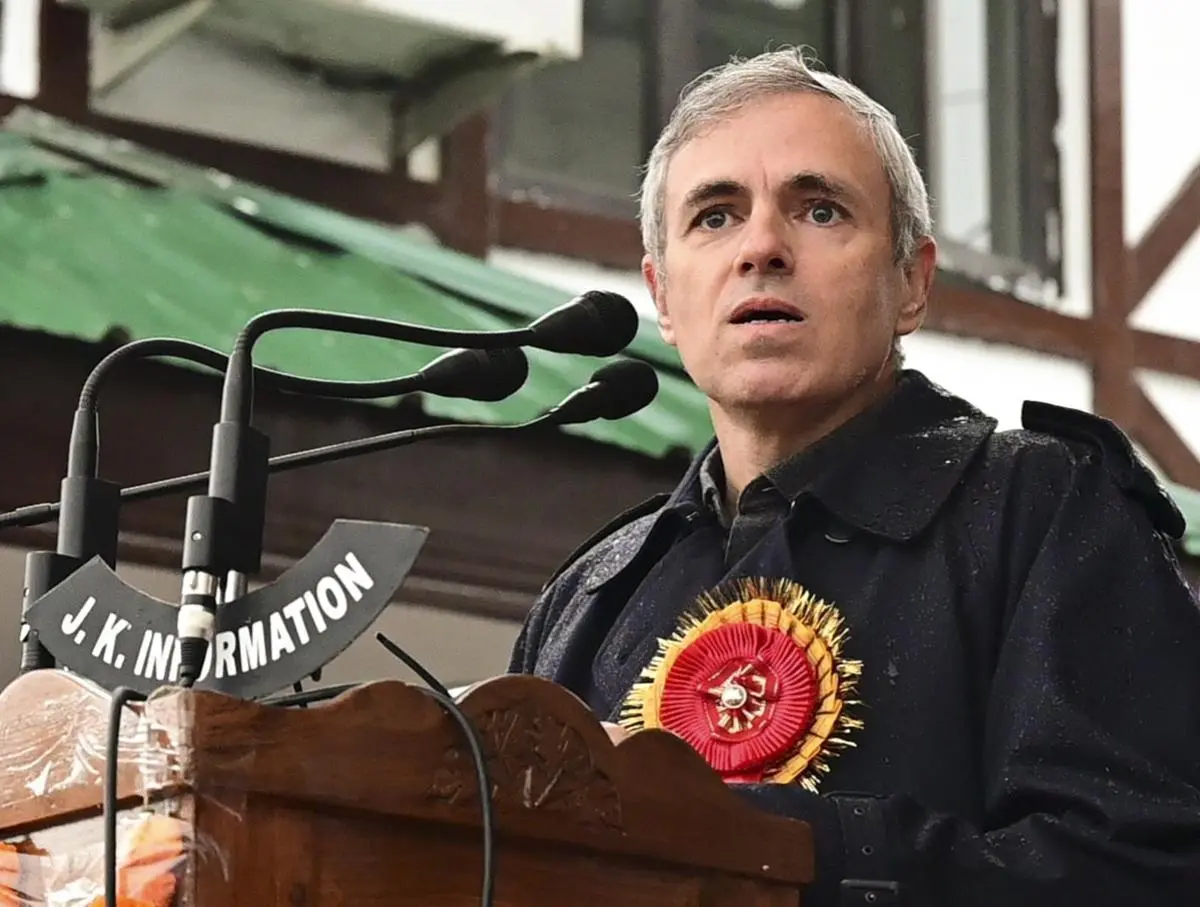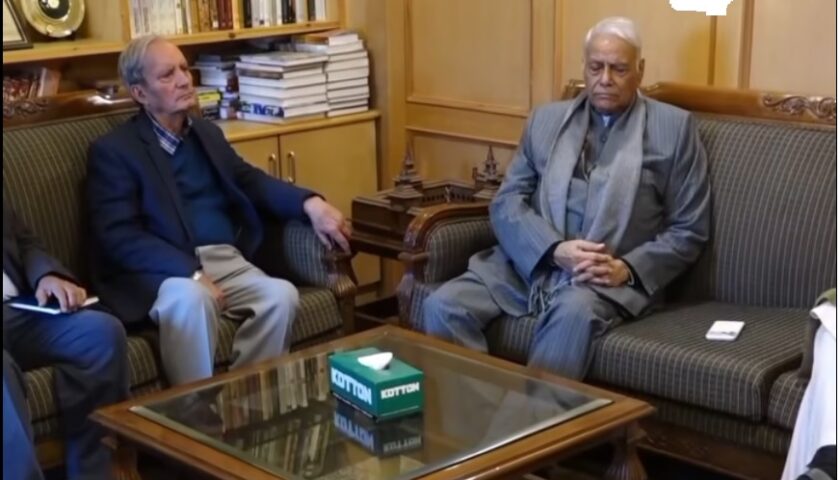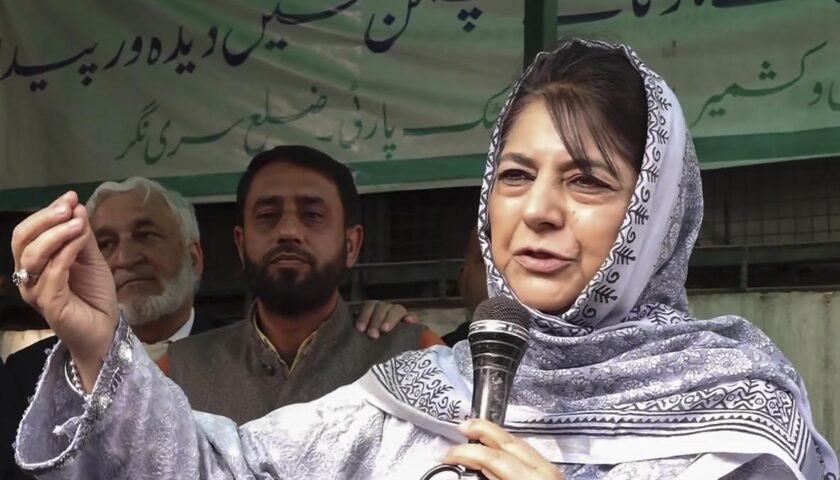A Battle Beyond the Ballot Box
By: Javid Amin | 11 October 2025
The upcoming Budgam Assembly bypoll on November 11, 2025, is no ordinary electoral exercise. It carries the weight of public judgment on one year of governance under Chief Minister Omar Abdullah and his party. Vacated by Omar himself after retaining the Ganderbal seat, Budgam has now become the symbolic battleground for assessing the government’s political credibility, its governance model, and its connection with the people.
Political observers are calling this by-election a referendum—a midterm evaluation of sorts. With growing internal criticism, a resurgent opposition, and rising expectations from citizens in the post-Article 370 era, Budgam has turned into the pulse point of political sentiment in Jammu & Kashmir.
Budgam Bypoll 2025: Key Election Schedule
-
Poll Notification: October 13, 2025
-
Last Date for Nominations: October 20
-
Scrutiny of Nominations: October 22
-
Withdrawal Deadline: October 24
-
Polling Date: November 11
-
Counting of Votes: November 14
While these dates may appear procedural, they have already triggered intense political activity on the ground. Party strategists are carefully timing their campaigns, gauging local mood, and recalibrating alliances.
Why This Bypoll Matters: Beyond Winning a Seat
The Budgam seat holds strategic and symbolic weight in the Valley’s political map. Historically considered a politically active region, it mirrors larger public sentiment in central Kashmir. For Omar Abdullah and his government, this bypoll is not about numbers alone—it’s about narrative.
-
A Referendum on Governance: After a year in power, people will vote on their perception of how the government has delivered—or failed to—on promises.
-
Internal Party Optics: With visible signs of dissent within the ruling party, a strong performance in Budgam is necessary to maintain internal unity.
-
Opposition’s Opening: For opposition parties, a dent in NC’s stronghold would be a political windfall, energizing their base ahead of future elections.
-
National Implications: Post-Article 370 politics is under national scrutiny. Every major election in the Valley is seen as a signal to the rest of the country.
One Year of Omar Abdullah Government: Public Expectations vs. Political Delivery
When Omar Abdullah returned to power in 2024, expectations were extraordinarily high. The electorate hoped for a restoration of political agency, faster development, better governance, and renewed engagement with people’s aspirations. But twelve months later, the verdict is mixed.
-
Statehood Restoration: The pace of progress has been slower than many anticipated. People expected a clear timeline or political strategy to push for the restoration of full statehood.
-
Grassroots Engagement: Many locals feel the government has remained distant, with limited outreach in rural and semi-urban pockets.
-
Governance Delivery: While there have been some administrative reforms, critics argue they have not translated into visible change on the ground.
-
Political Outreach: The absence of robust political dialogue with various community stakeholders has created a perception gap.
This gap between expectations and delivery is precisely why Budgam has become such a critical test case.
Aga Ruhullah’s Sharp Criticism: A Warning from Within
On October 11, 2025, senior National Conference leader and MP Aga Ruhullah Mehdi publicly criticized the government for failing to deliver on political expectations. In a statement that has since dominated political discussions, he said:
“The government has not done on the political front what should have been done over the last one year.”
His remarks were not a one-off outburst but a reflection of growing unease within party ranks. Ruhullah stressed that the administration should listen to the people, not just party insiders, and prioritize public concerns over political optics.
His statement carries weight for several reasons:
-
He is a sitting MP and a prominent voice within the party.
-
His criticism is rooted in public sentiment, not factional politics.
-
It comes just weeks before the Budgam by-election, amplifying its political impact.
Many observers see this as a political signal—a reminder that internal unity cannot be taken for granted if governance doesn’t match expectations.
Opposition on the Offensive: AIP, AAP and More
The opposition sees Budgam as an opportunity to strike. Parties like the Awami Ittehad Party (AIP) and the Aam Aadmi Party (AAP) have already announced their candidates, setting the stage for a multi-cornered contest.
-
AIP has fielded Nazir Ahmad Khan, a former DDC chairman known for his strong local presence.
-
AAP has entered the fray with candidates in Budgam and Nagrota, signaling its ambitions to expand in the region.
-
Smaller political formations and independent candidates are also testing the waters, hoping to consolidate anti-incumbency sentiment.
AIP, in particular, has made Budgam a centerpiece of its campaign, framing the election as a fight between people’s voice and political complacency.
Public Sentiment: Between Hope and Restlessness
In Budgam’s lanes, market squares, and villages, conversations are laced with mixed emotions. Some citizens express hope that the by-election will bring renewed political attention to their concerns, while others voice frustration over unmet promises.
Common Themes Emerging from Ground Conversations:
-
Lack of visible development projects in rural belts
-
Need for more transparent communication from the government
-
Skepticism about real political dialogue on statehood and autonomy
-
Concerns over unemployment and basic infrastructure
For many voters, this election is not about party loyalty alone—it’s about whether the ruling establishment is truly listening.
The Stakes for Omar Abdullah Personally
The Budgam seat is more than just a vacant constituency—it’s a seat he himself won in the 2024 Assembly polls. By vacating Budgam and retaining Ganderbal, Omar Abdullah raised expectations that the constituency would remain a priority for the government.
Now, if his party fails to hold Budgam, the political narrative could turn against him:
-
It would be framed as a rejection of his leadership in the region.
-
Internal critics could gain more leverage.
-
Opposition parties would amplify the defeat nationally as a sign of eroding support.
On the other hand, a clear victory would allow him to reclaim political momentum, silence critics, and strengthen his leadership going into 2026.
Strategic Narratives: How Parties Are Positioning Themselves
National Conference:
-
Framing the election as a vote for stability and continuity.
-
Highlighting administrative reforms and promising more engagement post-bypoll.
-
Deploying senior leaders to campaign aggressively in villages and urban centers.
AIP:
-
Positioning itself as the voice of local discontent.
-
Emphasizing grassroots connection and people-first politics.
-
Targeting the government for “political inaction.”
AAP:
-
Focusing on governance and development narratives.
-
Highlighting its national brand of “clean politics” and promising accountability.
-
Attempting to appeal to younger voters and first-time voters.
Independents and Smaller Groups:
-
Playing on local identity, caste, and community networks.
-
Hoping to split the vote share and emerge as spoilers or kingmakers.
Voter Dynamics and Demographics: Why Budgam Is Politically Unique
Budgam has a diverse electorate, with a mix of urban, semi-urban, and rural pockets. The constituency has historically shown high voter engagement and often swings based on sentiment rather than just party loyalty.
-
Youth Vote: A large section of voters are below 35. Their concerns revolve around employment, education, and representation.
-
Rural Base: Traditional loyalty towards established parties exists, but local issues dominate.
-
Urban and Semi-Urban Areas: These areas are more issue-based, responsive to campaign messaging and media narratives.
This mix makes Budgam a volatile but strategically critical constituency.
Potential Scenarios: What Each Outcome Could Mean
1. NC Wins with a Comfortable Margin
-
Strengthens Omar Abdullah’s leadership image.
-
Dampens internal dissent.
-
Creates momentum for the government’s second year.
-
Sends a signal of stability to alliance partners.
2. NC Wins Narrowly
-
Keeps the seat but reflects waning public confidence.
-
Gives internal critics more ground to demand political course correction.
-
Boosts opposition morale.
3. NC Loses
-
Could trigger a political storm within the party.
-
Embolden opposition ahead of future polls.
-
Create pressure to restructure governance strategy.
-
Shape national perception of instability.
Inside the Party: Balancing Governance and Political Messaging
The challenge for the ruling party is two-fold:
-
Governance Delivery: To convince voters that the government is listening, acting, and improving.
-
Political Messaging: To counter the growing narrative of inaction and internal divisions.
In recent weeks, senior leaders have begun public outreach programs, village visits, and stakeholder meetings. But time is short, and political narratives often harden quickly in volatile electoral cycles.
Internal Dissent as a Pressure Valve
Internal criticism—like that of Aga Ruhullah—isn’t just a political problem. It’s also a potential catalyst. If handled strategically, dissent can push the leadership to course correct and re-engage with people’s expectations. If ignored, it can snowball into factionalism.
Party insiders say closed-door discussions have already begun to address concerns raised by senior leaders. Whether these efforts will be reflected on the ground before polling day remains to be seen.
National Context: A Post-Article 370 Political Landscape
This bypoll cannot be divorced from the larger political backdrop. The region remains under the shadow of constitutional and administrative changes. Political parties are under pressure to deliver meaningful engagement, not just promises.
National observers are closely watching Budgam. A decisive result here will be interpreted far beyond the constituency.
Media and Public Narrative: Shaping Perception
Elections today are as much about optics as they are about votes. Social media, TV debates, and local news coverage have already turned Budgam into a political microcosm.
-
Televised debates are focusing on governance vs. rhetoric.
-
Social media influencers are amplifying grassroots voices.
-
Ground reports are shaping perception about whether this election is truly competitive.
The party that controls the narrative in the last two weeks of the campaign could shape the final outcome.
Bottom-Line: A Defining Political Moment
The Budgam by-election is more than just a legislative contest—it’s a political inflection point. For the ruling party, it’s a test of trust. For the opposition, it’s an opportunity to disrupt the status quo. For citizens, it’s a chance to send a message.
The outcome will reverberate through the political corridors for months to come. It will either reinforce the leadership of Omar Abdullah or force a deep rethink within the ruling party.
What happens in Budgam on November 11, 2025, won’t stay in Budgam—it will shape the political narrative of Jammu & Kashmir for the next phase.




